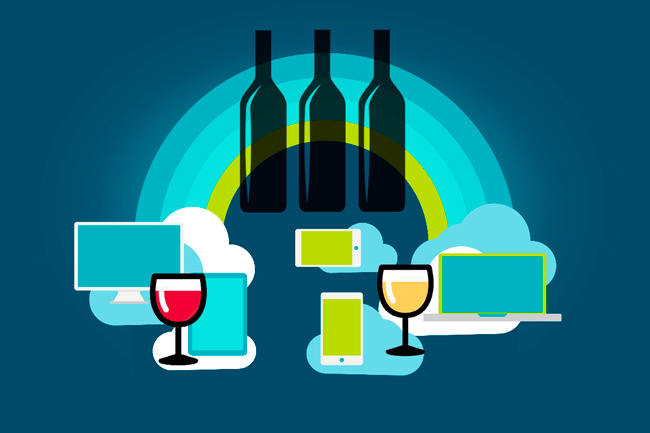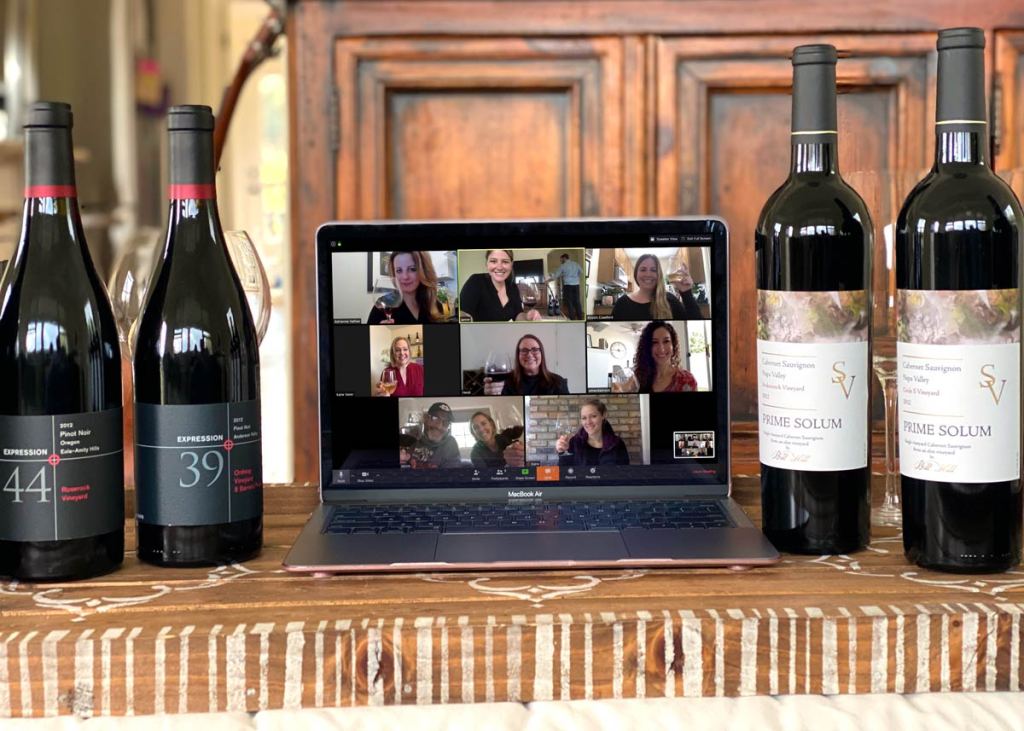 Looking for something to keep you occupied? Why not try some wine tasting? To enjoy a perfect wine tasting session at home during lockdown, you don't have to be an expert. All you need is a bottle of wine or two, or even three! Make sure it is at its proper temperature, you have a good wine glass and take your time.
Looking for something to keep you occupied? Why not try some wine tasting? To enjoy a perfect wine tasting session at home during lockdown, you don't have to be an expert. All you need is a bottle of wine or two, or even three! Make sure it is at its proper temperature, you have a good wine glass and take your time.
Here are a few tips to help with the experience:
1. DO A BLIND TASTING
As much as possible, try to taste the wine without the influence of labels or prices, you will be more open-minded and allow yourself to be carried away only by the sensations. Close your eyes, smell, savour and enjoy.
2. USE A DIFFERENT GLASS FOR EACH WINE
If you are going to taste several wines, change your glass. Prepare a different glass for each wine; this way you will not mix flavours. You also need to cleanse your palette. If you don’t cleanse your palette you will have remnants of the previous wine when you go to taste the next wine. That taints the flavour and you won’t be able to accurately taste the notes and flavours in the wine. When you taste a wide variety of wine your palette can become fatigued and overwhelmed, especially if you are new to drinking wine. Cleanse your palette correctly and you will discover tastes and flavours that you never imagined. High-quality white bread is the very best food for cleansing the palette when wine tasting. Plain white bread or French bread are both ideal. Don’t put anything on it, including butter or oil. Plain crackers are acceptable as well. The reason that bread works so well is that it has an extremely neutral flavour. Professionals in the field always use plain bread and wash it down with water to cleanse their palettes.
3. LOOK BEFORE YOU TRY IT
Before tasting it, observe the colours of the wine, it will help you understand a lot about the grape. For example with white wines from the D.O. Rueda, you will discover dozens of shades: pale, straw yellow, gold ... The greenish-yellow colour, for example, makes the Verdejo grape variety unmistakable. On the other hand, using a white surface (a simple sheet of paper is sufficient) helps to better appreciate the colours of any wine and allows you to see if it is shiny or if there is any sediment - particles in suspension. This doesn't mean the wine is bad, I may add, it is a completely natural occurrence.
4. HOLD THE GLASS BY THE STEM
The reason is very simple: doing so will avoid heating the wine with your hands. Gently rotate the cup from the base in small circles an in both directions. With this slight movement, you will be able to observe, on the one hand, how the 'tears' of the wine fall (at a lower rate of fall, higher density and, therefore, more alcoholic strength) and, on the other, how the aromas come out when oxygenating the wine.
5. SMELL IT SEVERAL TIMES
Although at first glance it may be somewhat strange to smell the wine before tasting it, it is the key to appreciating it to the fullest, since smell has a sensory capacity superior to any other sense, including taste. When you first start smelling wine, think big to small. Are there fruits? Think of broad categories first, i.e. citrus, orchard, or tropical fruits in whites or, when tasting reds, red fruits, blue fruits, or black fruits. Getting too specific or looking for one particular note can lead to frustration. Broadly, you can divide the nose of a wine into three primary categories:
Primary Aromas are grape-derivative and include fruits, herbs, and floral notes.
Secondary Aromas come from winemaking practices. The most common aromas are yeast-derivative and are most easy to spot in white wines: cheese rind, nut husk (almond, peanut), or stale beer.
Tertiary Aromas come from ageing, usually in the bottle, or possibly in oak. These aromas are mostly savoury: roasted nuts, baking spices, vanilla, autumn leaves, old tobacco, cured leather, cedar, and even coconut.
You should smell the wine in a still glass and also straight after swirling the glass in circles since in both cases different smells and sensations emerge: floral, spiced, fruit, vegetables, balsamic, chemicals ... Our advice is not to wear strong perfumes and avoid external odours so that your capacity to smell is not influenced or weakened.
6. AND NOW, TASTE IT...
The time has finally come to enjoy it! In this phase, we find many characteristics that will make our wine a unique wine: the temperature, the texture, the persistence in the mouth once we have drunk it, the balance between sweetness and acidity ... Always remember that a wine is not good or bad per se; the best wine will always be the one you like best, so this is what you will need to recognise. What is it that you like about a particular wine?
Taste is how we use our tongues to observe the wine, but also, once you swallow the wine, the aromas may change because you’re receiving them retro-nasally. A few things you want to keep in mind are the following:
Taste: Our tongues can detect salty, sour, sweet, or bitter. All wines are going to have some sour, because grapes all inherently have some acid. This varies with climate and grape type. Some varieties are known for their bitterness (i.e. Pinot Grigio), and it manifests as a sort of light, pleasant tonic-water-type flavour. Some white table wines have a small portion of their grape sugars retained, and this adds natural sweetness. You can’t ever smell sweetness though since only your tongue can detect it. Lastly, very few wines have a salty quality, but in some rare instances, salty reds and whites exist.
Texture: Your tongue can “touch” the wine and perceive its texture. Texture in wine is related to a few factors, but an increase in texture almost always happens in a higher-alcohol, riper wine. Ethanol gives a wine texture because we perceive it as “richer” than water. We also can detect the presence of tannins with our tongue, which is that sand-paper or tongue-depressor drying sensation found in red wines.
Length: The taste of wine is also time-based, there is a beginning, middle (mid-palate) and end (finish). Ask yourself, how long it takes until the wine isn’t with you anymore?
Think: Did the wine taste balanced or out of balance (i.e. too acidic, too alcoholic, too tannic)? Did you like the wine? Was this wine unique or unmemorable? Were there any characteristics that shined through and impressed you?

7. DO THE TASTING IN GOOD COMPANY
The best way to taste wine is with other people, either in person (if you share the same household of course) or via video call, so that each person shares their perceptions!
Always remember that the same wine is perceived differently in each individual palette.
So why not organise a wine tasting session with your friends or family. It is something that you can do together via ZOOM or SKYPE and is a great reason to get together online!
Just simply organise to buy the same wines and then set a date and a time and have some fun!